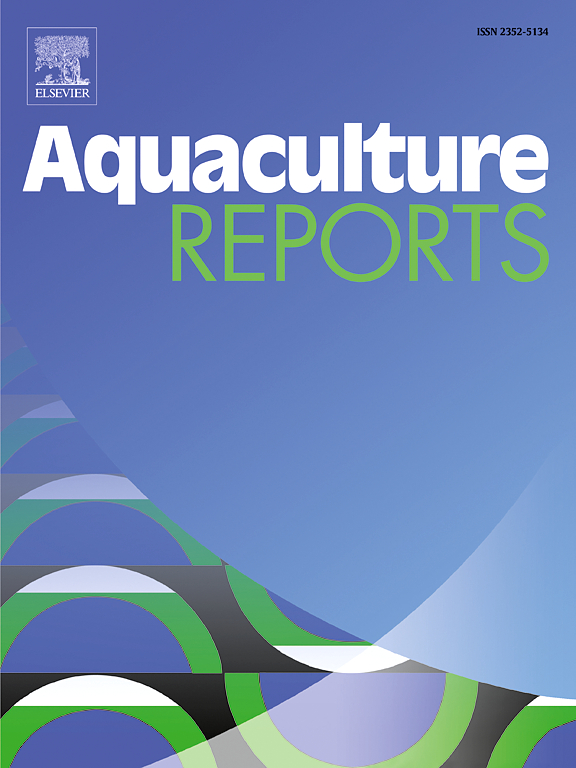Regulation of glycolipid and amino acid metabolism in juvenile triploid crucian carp (Carassius auratus) by oral administration of aspartic acid
IF 3.2
2区 农林科学
Q1 FISHERIES
引用次数: 0
Abstract
Aspartic acid, a nonessential amino acid, plays crucial roles in protein synthesis, tricarboxylic acid cycle, and glycolipid metabolism in mammals. However, corresponding studies of the role of aspartic acid in fish remain limited. This study aimed to investigate the effects of aspartic acid on physiological metabolism of triploid crucian carp (Carassius auratus). The fish (48.2 ± 2.4 g) were administered with low (0.22 g/mL, LA) or high (0.44 g/mL, HA) concentrations of L-aspartic acid solution, while normal saline was given to the control group. The results demonstrated that plasma glucose levels in both the LA and HA groups were remarkably decreased at 3 h after administration, while hepatic glycogen content increased dramatically. Furthermore, compared to the LA group, the glucose levels in the HA group were noticeably higher at 6 h. Plasma free fatty acids were remarkably decreased in both the LA and HA groups compared to control group at 3 h after administration, whereas the HA group had considerably higher plasma total cholesterol levels than the LA group. Additionally, the gene expression levels of genes involved in synthesis of fatty acids (acc, srebp1 and fasn) were significantly higher in the liver of the HA group compared with the LA group. However, aspartic acid did not affect the gene expression of key enzymes involved in hepatic fatty acid β-oxidation. Both the LA and HA groups had significantly higher plasma levels of free aspartic acid, glutamic acid, and total essential amino acids. Additionally, the gene expression level and enzymatic activity of hepatic aspartate aminotransferase were increased (P < 0.05). In conclusion, different doses of aspartic acid induced distinct physiological and metabolic responses in triploid crucian carp. High-dose aspartic acid enhanced amino acid metabolism in the liver, thus increasing the capacity for de novo synthesis of fatty acids.
求助全文
约1分钟内获得全文
求助全文
来源期刊

Aquaculture Reports
Agricultural and Biological Sciences-Animal Science and Zoology
CiteScore
5.90
自引率
8.10%
发文量
469
审稿时长
77 days
期刊介绍:
Aquaculture Reports will publish original research papers and reviews documenting outstanding science with a regional context and focus, answering the need for high quality information on novel species, systems and regions in emerging areas of aquaculture research and development, such as integrated multi-trophic aquaculture, urban aquaculture, ornamental, unfed aquaculture, offshore aquaculture and others. Papers having industry research as priority and encompassing product development research or current industry practice are encouraged.
 求助内容:
求助内容: 应助结果提醒方式:
应助结果提醒方式:


